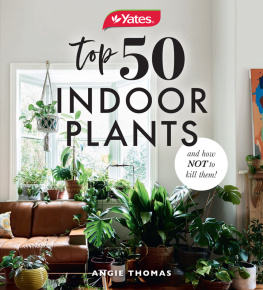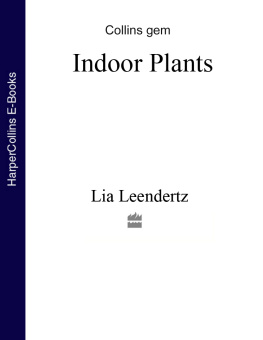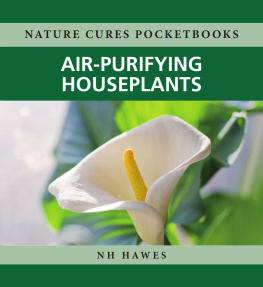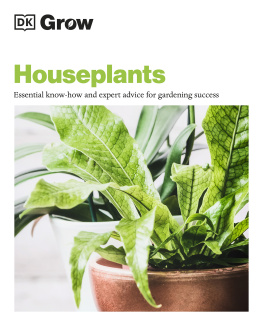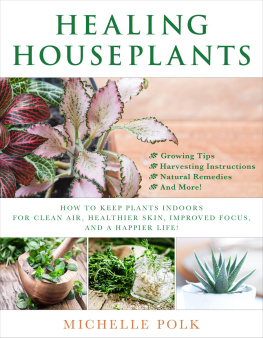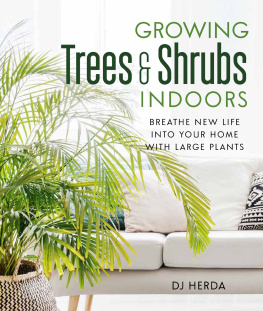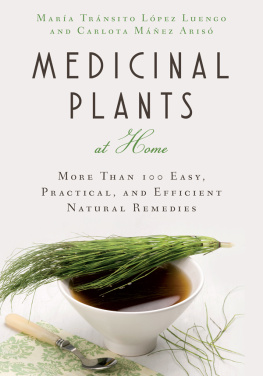LIFESAVING HEALTH
BENEFITSAND
MEDICNALUSES OF
COMMONINDOOR
PLANTS
(ANDHOW TO GROW THEM)
BYMICHAEL SIMPSON
Thisbook is copyrighted material
(ASIN:B00I0OB4PS)
1 Air Purifiers
Itis common knowledge that plants remove carbon dioxide from the airand produce clean oxygen in the air we breath. What may not be socommonly known is that NASA actually did a study about using plantsin orbital space stations to purify air. The findingS of that studywere quite fantastic. They found that many common plants reduce airpollution and cancer causing chemicals in homes and offices!
TheALCA (Associated Land Contractors of America )along with NASA, after a 2 year study, released in 1989 findingsthat common plants reduce indoor air pollution. This study includednearly a dozen common varieties of house plants. Each type of plantwas placed in a sealed container and put through a series of tests.
Thetests concluded that flowering plants such as the Gerbera daisy andChrysanthemums were best in removing benzene from the chamberatmosphere. Philodendron, Spider plant, and the Golden pothos werethe effective in removing formaldehyde. Other species of airpurifiers included: Ficus, Dracaena massangeana cane, Bamboo palm,Mother-in-Laws's tongue(Sanseveria), English Ivy and Chinese evergreen species.
In developed countries people spend 90 percent of their time indoors.Indoor air pollution has been found 12 times more polluted thanoutdoor air in some places. According to a 2002 World HealthOrganization report indoor pollutants are a serious health risk thatis responsible for 1.6 million deaths every year! NASA with the ALCA,and many other studies have proven common houseplants can eliminatethese pollutants.
The ability of plants to remove VOCs is called phytoremediation.Acute illnesses such as asthma, nausea, cancer, neuralgic,reproductive, developmental, and respiratory disorders are linked toexposure to in air pollutants. Plants remove these toxins bybreathing them in through tiny holes in their leaves, and thenreleasing oxygen much like an air filter.
Phytoremediation( phyto from Ancient Greek), meaning plant,and remdium Latin, meaning restoring balance )is the use of plants to mitigate an environmental problem. A processthat has become more and more popular over the past 20 years.
Another study including 28 varieties of indoor plants, introducing 5common toxins, concluded that purple waffle plant, English ivy,variegated wax plant, and Asparagus fern were superior in removingall the toxins introduced. Purple heart plant rated highest in theability to remove 4 of the toxins.
2 Air Plant
Bryophyllumpinnatum ( Air Plant, Life Plant, Miracle Leaf, and GoethePlant ) is a widely popularhouseplant native to Madagascar. It has also been introduced to thetemperate regions of Asia, the Caribbean, and the Pacific. It is wellknown for the profusion of small plantlets that form along itsleaves, and it is labeled as an invasive species.
Airplants need constant air circulation with some moisture in springthrough summer and should be misted daily. Mist onlyonce a week during winter months. They may be fertilized monthlyduring spring and summer with a low nitrogen liquid fertilizer at strength. They must be grow in bright indirect sunlight if it's theground variety. Keep in partial shade if growing the tree variety,and maintain a constant moisture. Air plants are easy to grow becausethey usually only use their roots for attaching themselves to otherobjects. They grow best in temperatures that are 10 to 15 degreesless at night. Keep them away from cold and frost.
Bryophyllum pinnatum has been known to treat infections, rheumatism,and inflammation. It has been used in India for hypertension,treatment of kidney stones, and significantly reduce pain caused byrenal stone. In Jamaica the juice, often mixed with honey or salt,from the leaf is used for colds, coughs, headaches, hypertension, andbronchial problems. In the Eastern Caribbean it is used as tea forcolds, the juice applied directly to sores and the head for aheadache. In Brazil it is used to treat boils, kidney stones, gastriculcers, burns, insect bites, eye infections, and respiratoryproblems. It contains bufadienolide cardiac glycosides that havecause cardiac poisoning even in grazing animals. So it's intake mustbe limited.
Bufadienolide compounds from this plant contain bryophillin A, astrong anti-tumor medicine, and Bryophillin C has insecticidalproperties. It has also been used for earaches and the leaves as aheated compress for abscesses and swelling.
3 Aloe Vera
Aloe( Medicine Plant, Lily of the Desert, Burn Plant, ElephantsGall ) is sold world wide. It isalso an easily grown, common, houseplant. Its history dates back6,000 years ago to early Egypt, engraved on stone. It was dubbed theplant of immortality, and presented as burial gifts ofpharaohs after their demise. Today there are over 300 species.
Aloevary needs planting in wide containers in well drained pottingmix suitable for cacti and succulents. They grow best in full sun.Water aloe regularly from April to October. Water twice a month thethe rest of the year. They may be fertilized with a diluted lownitrogen fertilizer. It grows best in well drained soil with plentyof room for the growth of roots.
Most aloes produce pups. When they are formed you can grow new plantfrom them by removing and replanting them. This is done by detachingthe pups once they have fully formed and laying them in the soil nextto the mother plant. Let them callous for a few days in a cool dryarea and replant them in a new pot once they have roots. You maylightly cover the broken ends with soil. Do not water! They may belightly misted to aid with rooting.
It has been taken internally as a laxative, treat diabetes, asthma,epilepsy, and arthritis. Commonly the sap from the plant is used totreat burns, sunburns, treat psoriasis, and various other skinirritations. It is sold commercially in a variety of products. It hasbeen approved by the FDA as a food flavoring and has not beenassociated with any significant side effects.
4 Prickly Pear Cactus
Prickly pear cactus is a very thriving cactus. It is known as aninvasive plant. It can be grown indoors and out. Mexican andMexican-American cultures eat the young plant. It contains fiber andpectin known to decrease the absorption of sugar in the stomachlowering blood glucose.
Prickly pear cactus should be placed in a southeast or southwestfacing window when grown indoors. The prefer temperatures between 65and 90 degrees Fahrenheit during spring and summer months. The cactusshould be allowed a temperature between 45 and 55 degrees Fahrenheitduring fall and winter. This cactus should only be watered when thetop inch of soil is dry during spring and summer. Water only whensoil is almost completely dry in fall and winter months. They may befertilized using 5-10-10 liquid fertilizer during the growing season.Plant in well draining cactus soil or use a combination of 1 partpeat moss, 1 part sand, and 1 part potting soil.
Aside from food, jellies, and candies, it has been taken for avariety of other disorders such as: a cure for hangover, diarrhea,(BPH), viral infection, colitis, type 2 diabetes, high cholesterol,high blood pressure, heartburn, ulcers, fatigue, shortness of breath,and obesity. The heated cactus pads have been used as poultices forrheumatism. It's fruit has also been used to treat gonorrhea, asthma,and diarrhea.
There are over 150 types of prickly pear cacti. You can take cuttingsfrom a healthy cactus at night when the temperature is around 60degrees Fahrenheit. Each new pad has a natural seam. Cut along theseam. Put the cutting on a flat surface in filtered sunlight. Let thecutting callous for 10 days. Plant in cactus soil 1/3 to ofthe way into the soil. Pat the soil until it is firm enough for thecactus to remain stable standing upright. Water the soil until it isevenly moist. Place the pot in a warm room in filtered sunlight andwater when the top layer of soil is completely dry. Decrease wateringevery week once it becomes established and starts growing. Give thecactus inch of water every two weeks at night. Move it tofull sunlight once it starts producing new growth. The cacti shouldbe grown for at least a year before planting outside in the spring.
Next page








